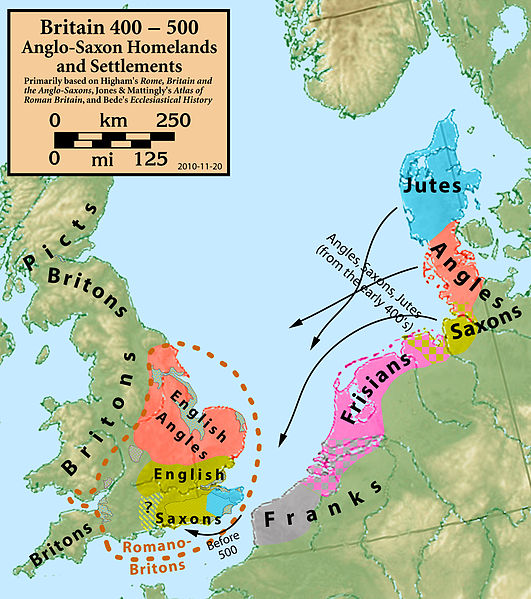




500 years of catastrophe
All Europe suffered. The population dropped by 25% from 36 million in 200 AD to 27 million in 500 AD. It took another 500 years for the population to climb back to what it was in 200 AD. It seems clear that the subgroups of L161 were not spared. The TMRCA of Isles C and D indicate some fairly serious bottlenecking. Isles A was very close to extinction.
2,000 y.a. __The beginning of a 500 year long series of catastrophies.
2,000 y.a. __The beginning of a 500 year long series of catastrophies.
2,000 y.a. __Small invasions by the Angles, Saxons, Jutes, and Danes began and continued regularly for 500 years until the main invasions occurred.1,450 y.a. __The Diaspora of Isles A
1,973 y.a. __The Roman conquest (43 AD) under the Emperor Claudius began a 350 year long series of rebellions and guerilla warfare.
1,937 y.a. __The VEI 5 eruption of Mt. Vesuvius (79 AD) caused crop failures as well as burying the cities of Pompeii and Herculaneum.
1,850 y.a. __The Antonine Plague and Britain's Great Plague devastated England.
1,750 y.a. __The Plagues of Cyprian and Aurelian wreaked havoc for 20 years.
1,600 y.a. __The Roman withdrawal (410 AD) left a power vacuum that was soon filled by the invading Angles, Saxons, Jutes and Danes.
1,500 y.a. __Main Anglo-Saxon invasion. - Cerdic the Saxon became King of WessexThe invasions were propeled by some frigid years of crop failure - a result perhaps of the TBJ volcanic eruption (next pagagraph). The slave trade, run by the new Saxon rulers, flourished in Bristol and other places selling native Britons (including Isles B) to the European continent. This could account for most of those rare Isles B individuals found there.1,500 y.a. __The enormous Tierra Blanco Joven - "TBJ" eruption and "AD 536 Events"
In 577 AD, Cerdic's great-grandson Ceawlin completed the Saxon conquest of England with his victory at the battle of Deorham in what is now the suburbs of Bristol, England. (If you are of British stock, Ceawlin is your approximately 40th great-grandfather.)The eruption of the Ilopango volcano in El Salvador had disasterous effects by causing the extreme climate cooling of A.D. 535-536 and crop failures for two decades of famine killing millions worldwide. New findings would make it the second-largest volcanic eruption in the last 260,000 years.1,500 y.a. __The Plague of Justinian killed at least 25 million Europeans
(Mt. Toba, 73 kya, was the largest. The next three are tied for second place: TBJ, Oranui, and Whakamaru of New Zealand's Taupo volcanic zone,.
The 500 year long series of catastrophies from 2,000 to 1,500 years ago drove Isles A to the brink of extinction as is shown by the shockingly low TMRCA of 950 years. By 500 A.D. there may have been only a few families of Isles A left alive, mostly in County Cork and Bantry Bay in southwest Ireland. Then, somehow, their luck changed. Several new SNP groups, A13364, A11374, and Y11772 were quickly produced, survived, and dispersed, indicative of a favorable environment and rapid population expansion.
A13364, the Driscolls, stayed in Cork to become the biggest group. A11374 stayed in the area for centuries, but later migrated to America. A11772 split and both groups migrated north. Y12075 moved to Scotland and became the Munro/Monroe family. A11115 settled on the Isle of Man, Northern Ireland, Scotland, and Wiltshire, south of Bristol, England. (The last survivor of this last group emigrated from Bristol to Virginia in 1635 so that Wiltshire group is now, so far as we have evidence, extinct in the British Isles.)
